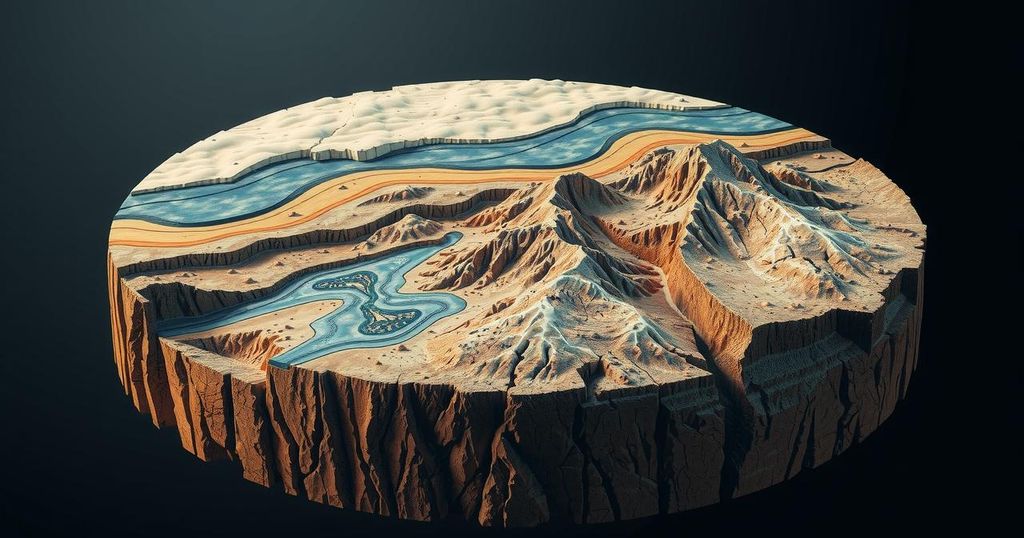Understanding Plate Tectonics: The Journey from Continental Drift to Geologic Theory

The article discusses the development and validation of the plate tectonics theory, stemming from Alfred Wegener’s concept of continental drift. Despite initial skepticism, geological evidence, particularly paleomagnetism and ocean floor features, confirmed this theory. It concludes that understanding tectonic movements informs our knowledge of Earth’s geological processes, ultimately supporting Wegener’s contributions to geology.
The theory of plate tectonics revolutionized our understanding of Earth’s geological processes, highlighting the movement of continents over time through continental drift. Initially proposed by Alfred Wegener, the concept faced skepticism, primarily from scientists who overlooked vital geological evidence. Renewed interest in the theory arose during the mid-20th century, driven by paleomagnetic studies that demonstrated historical shifts of the magnetic poles, ultimately corroborating Wegener’s hypothesis. Major geological features identified on the ocean floor—such as oceanic ridges, trenches, and transform faults—provided crucial insights into the mechanics of tectonic movements, contributing to the establishment of a cohesive framework for understanding Earth’s dynamic crust.
Plate tectonics is a scientific theory explaining the movement of the Earth’s lithosphere, which is divided into tectonic plates. The origins of this theory trace back to the early 20th century with Alfred Wegener’s proposal of continental drift, which suggested that continents were once unified and have since drifted apart. Key geological observations, such as the matching of sedimentary layers across continents, prompted renewed interest in this hypothesis in the 1950s and 1960s, especially after paleomagnetism revealed significant shifts in the Earth’s magnetic field over geological time.
In summary, the theory of plate tectonics, underscored by the concept of continental drift, has fundamentally influenced our understanding of Earth’s geological history. The comprehensive evidence garnered from paleomagnetic studies and oceanographic research has validated Wegener’s original postulates, shifting the scientific discourse in favor of a framework that explains the dynamic nature of Earth’s crust. This understanding not only explains geological formations and seismic activities but also provides a foundation for predicting future tectonic movements and related phenomena.
Original Source: www.britannica.com






